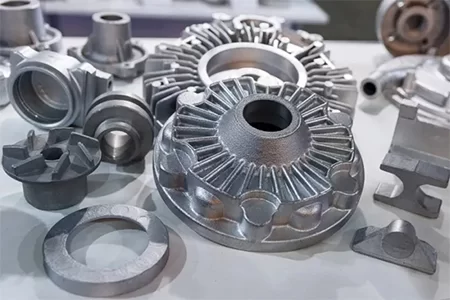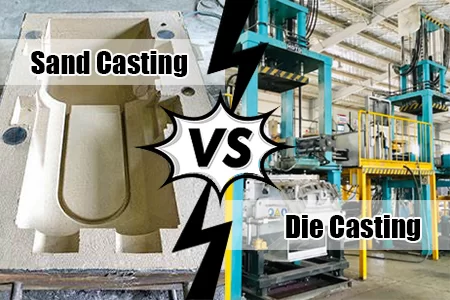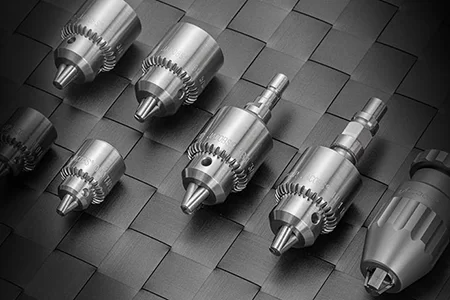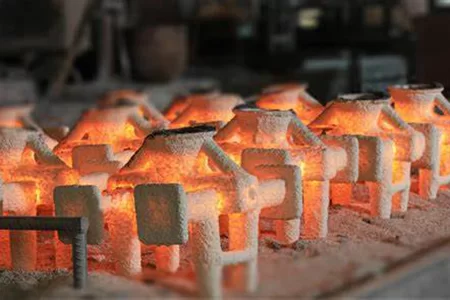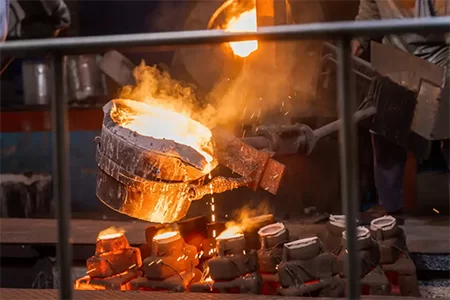
What Factors Should Be Considered When Choosing A Metal Casting Method?
-
Home>
-
Blog>
-
Technology>
What Factors Should Be Considered When Choosing A Metal Casting Method?
Metal casting is a versatile and essential manufacturing process used across various industries to create complex and precise metal parts. However, with several metal casting methods available, each with its own unique characteristics and applications, it can be quite challenging to determine which method is the most suitable for your specific project. In this blog post, we will explore the key factors that should be considered when choosing a metal casting method.
Part Design and Complexity
The design and complexity of the part you need to cast play a crucial role in determining the appropriate casting method. Some casting methods are better suited for simple geometries, while others can handle highly intricate and detailed designs.
For example, sand casting is a relatively simple and cost-effective method that can accommodate a wide range of part sizes and shapes. It is often used for large, bulky components with relatively simple geometries. On the other hand, investment casting, also known as lost wax casting, is ideal for producing parts with extremely high precision and intricate details. This method is commonly used in the aerospace, medical, and jewelry industries where tight tolerances and complex shapes are required.
Material Requirements
The type of metal or alloy to be cast also influences the choice of casting method. Different metals have different melting points, fluidity, and castability properties, which need to be taken into account.
Some casting methods are more suitable for certain metals than others. For instance, die casting is typically used for casting non-ferrous metals such as aluminum, zinc, and magnesium. These metals have good fluidity and can be easily cast into thin-walled and complex shapes. In contrast, cast iron and steel are often cast using methods like sand casting or investment casting, as they require higher melting temperatures and have different fluidity characteristics.
Production Volume and Cost
The expected production volume and cost constraints are important factors to consider when selecting a metal casting method. Some methods are more cost-effective for small-scale production runs, while others offer better economies of scale for large-volume production.
Sand casting is generally more economical for small to medium-sized production runs, as the initial setup costs are relatively low. However, the process is relatively slow and may require more labor-intensive finishing operations. On the other hand, methods like die casting and continuous casting are more suitable for high-volume production. Although the initial investment in equipment and tooling is higher, the production speed and efficiency can significantly reduce the per-unit cost for large quantities.
Surface Finish and Tolerance Requirements
The desired surface finish and tolerance levels of the cast parts are also critical considerations. Some casting methods can produce parts with excellent surface finishes and tight tolerances, while others may require additional machining or finishing operations.
Investment casting and die casting are known for their ability to produce parts with superior surface finishes and tight tolerances. In investment casting, the wax pattern is precisely machined before being coated with a ceramic shell, resulting in a high-quality surface finish. Die casting, with its high-pressure injection process, can produce parts with very tight tolerances and smooth surfaces. In contrast, sand casting may require subsequent machining to achieve the desired surface finish and dimensional accuracy.
Availability of Equipment and Expertise
The availability of the necessary equipment and expertise in your region or within your organization is another factor to consider. Some casting methods require specialized and expensive equipment that may not be readily available in all areas.
Before choosing a casting method, it is important to assess whether you have access to the required equipment and whether your team has the necessary skills and experience to operate and maintain it. If not, you may need to consider outsourcing the casting process to a specialized foundry that has the appropriate facilities and expertise.
Environmental and Safety Considerations
In today's environmentally conscious world, it is essential to consider the environmental impact of the casting process. Some methods may generate more waste, require more energy, or use hazardous materials compared to others.
For example, sand casting generates a significant amount of sand waste, which needs to be properly managed and recycled. On the other hand, investment casting uses a ceramic shell that is more environmentally friendly and can be easily disposed of or recycled. Additionally, safety should also be a top priority. Some casting methods, such as die casting, involve high-pressure and high-temperature processes that require strict safety measures to protect the workers.
In conclusion, choosing the right metal casting method for your project requires careful consideration of multiple factors. By taking into account the part design, material requirements, production volume, surface finish and tolerance, equipment and expertise availability, as well as environmental and safety considerations, you can make an informed decision that ensures the successful production of high-quality metal castings. Whether you are a manufacturer looking to optimize your production process or an inventor with a unique product idea, understanding these factors will help you achieve your goals with precision and efficiency.
If you are not sure what casting method to use for your product, you can always contact us. As a metal casting supplier with more than 20 years of casting experience, Hulk Metal can choose the most suitable casting method for you and help you package the casting quality while spending the least cost.
Article Navigation
Article Navigation
Industries
Foundries
-

March.28, 2025
Everything You Need to Know About Die Casting!
READ MORE
-

March.26, 2025
Sand Casting vs. Die Casting: Which is Right for Your Project?
READ MORE
-

March.12, 2025
Applications of Stainless Steel Castings in Medical Devices
READ MORE
-

March.03, 2025
Addressing Defects in Castings: A Comprehensive Guide
READ MORE
-

February.25, 2025
How to Compare Product Quality Between Different Casting Foundries?
READ MORE
-

February.14, 2025
What Are The Metal Casting Materials Commonly Used in Foundries?
READ MORE



